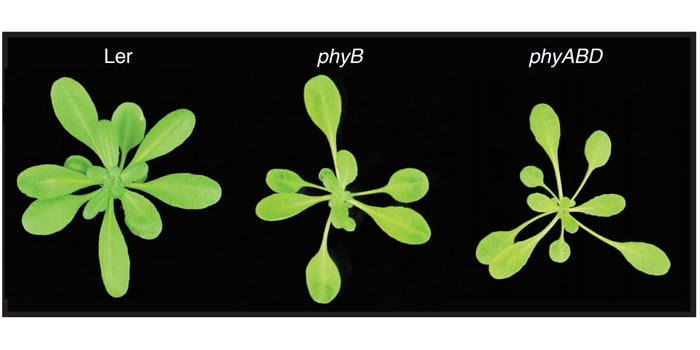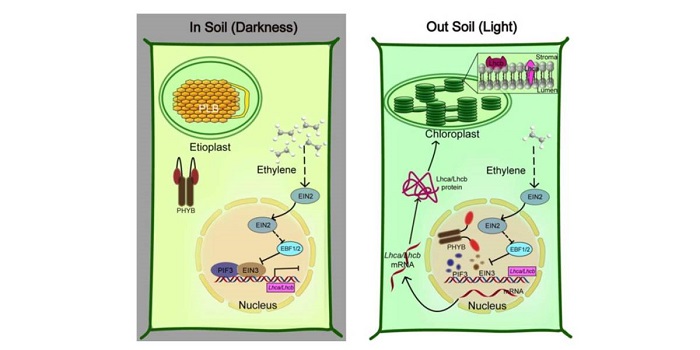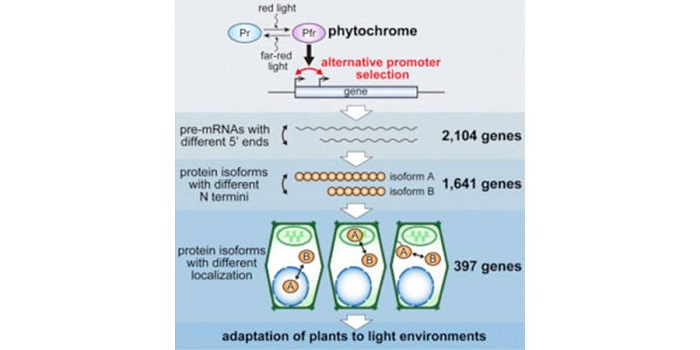
Supression of phyB dark reversion by PCH1 and PCHL (Nature Comms.)
Blog, Plant Science Research Weekly, Research, Research BlogNature Comms. Phytochromes can exist in two states: an inactive state Pr and an active state Pfr. They convert into each other by light absorption. They can also revert to the inactive state by a light-independent thermal relaxation process called dark reversion. Phytochrome B is the primary receptor…

Phytochrome, metabolism and growth plasticity
Blog, Plant Science Research Weekly, Research, Research BlogPhytochromes are plant photoreceptors that can sense red and far-red light, as-well-as the ratio of these light qualities. This review examines the relationship between phytochrome signalling and carbon metabolism. Krahmer et al. assess the influence of phytochrome signalling on the synthesis of…

EIN3 and PIF3 interdependently repress chloroplast development in buried seedlings
Blog, Plant Science Research Weekly, Research, Research BlogDuring embryogenesis, plastids arrest their differentiation as etioplasts (characterized by the distinctive prolamellar bodies, PLBs), and remain poised to complete their differentiation into functioning chloroplasts upon exposure to light. Liu et al. explored the factors that interact to effect this…

Light controls protein localization through phytochrome-mediated alternative promoter selection ($)
Blog, Plant Science Research Weekly, Research, Research BlogPrevious studies have shown that some genes use multiple promoters, but the extent to which this occurs has not been fully resolved. Ushijima et al. showed widespread phytochrome-mediated differential promoter use in response to light. They identified more than 2000 genes with light-dependent alternative…

